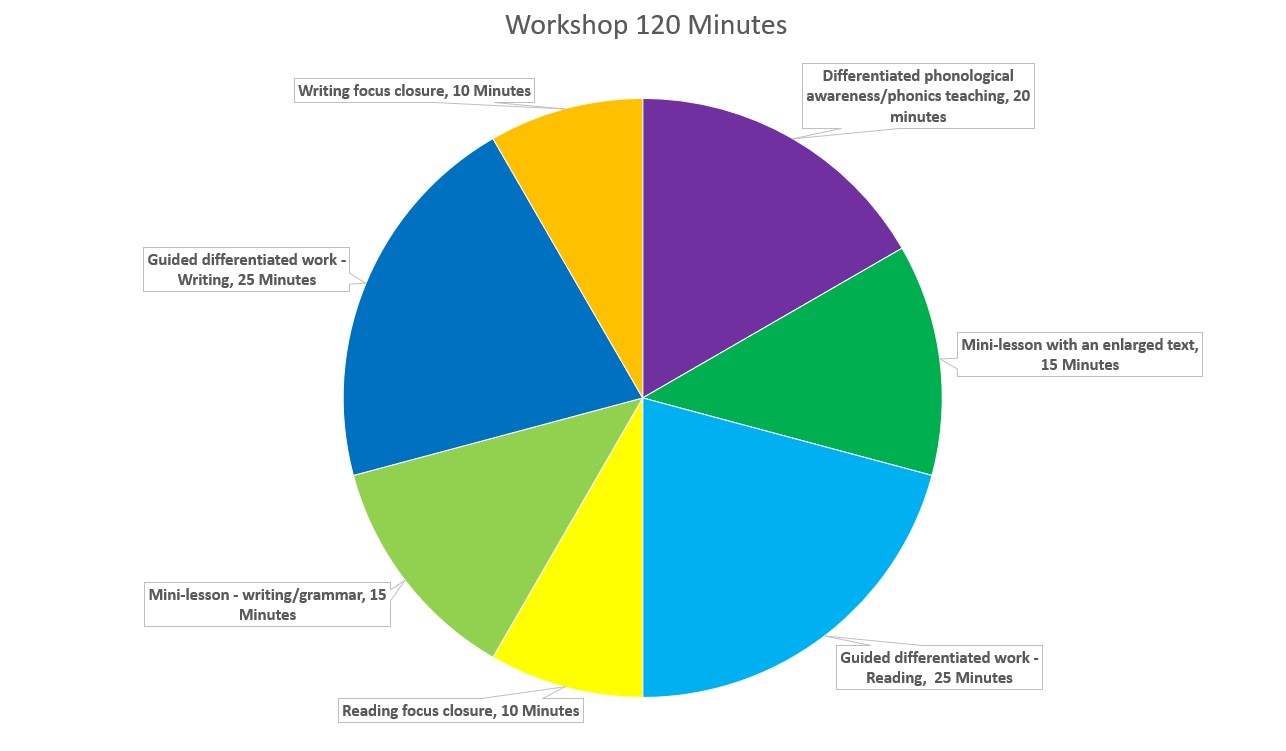Overview
This example of the workshop framework runs for approximately 120 minutes, integrating reading, writing and speaking and listening.

The 120 minute workshop contains seven phases, with indicative time allocations, although these are not rigid.

The full Workshop Approach table can be viewed here.
Workshop Approach Example A in detail
Each of the phases for the Example A Workshop Approach are explained below, expand each accordion to view details of the teacher and student roles of each stage of the Workshop.
Differentiated phonological awareness and phonics teaching
Differentiated phonological awareness (PA) and
phonics teaching for
decoding and
encoding
Teacher led:
Student decoding and encoding:
- small group and independent practice of focus.
-
handwriting practice to consolidate phoneme.
Approximately 20 minutes
Whole group mini-lesson with an enlarged text (read or viewed)
|
Teacher led reading:
Goals are set: the learning intention and
differentiated success criteria for the session are articulated and/or displayed. Approximately 15 minutes
|
Guided, differentiated reading work
Guided
differentiated work - teacher led small group and/or one-on-one instruction and conferencing.
Teacher led:
Student reading:
Practices run for 10 to 15 minutes each. Whole group reading focus closure
Teacher:
- provides opportunities for constructive
feedback linking learning back to the learning intention and
differentiated success criteria.
Students:
Approximately 10 minutes
Whole group writing mini lesson
Whole group mini-lesson of
writing/grammar in context.
Teacher led writing:
Goals are set: the learning intention and differentiated success criteria are articulated and/or displayed.
Approximately 15 minutes
|
Guided, differentiated writing work
Guided
differentiated work - teacher led small group and/or one-on-one instruction and conferencing.
Teacher led:
Student writing:
Practices run for 10 to 15 minutes each.
Approximately 25 minutes
Whole group writing focus closure
Teacher:
- provide opportunities for constructive
feedback, linking learning back to the learning intention and
differentiated success criteria.
Students:
- share their writing with others.
- use a
metalanguage to discuss what they have learnt as a writer.
- provide constructive
feedback to peers with reference to the learning intention and
differentiated success criteria.
Approximately 10 minutes